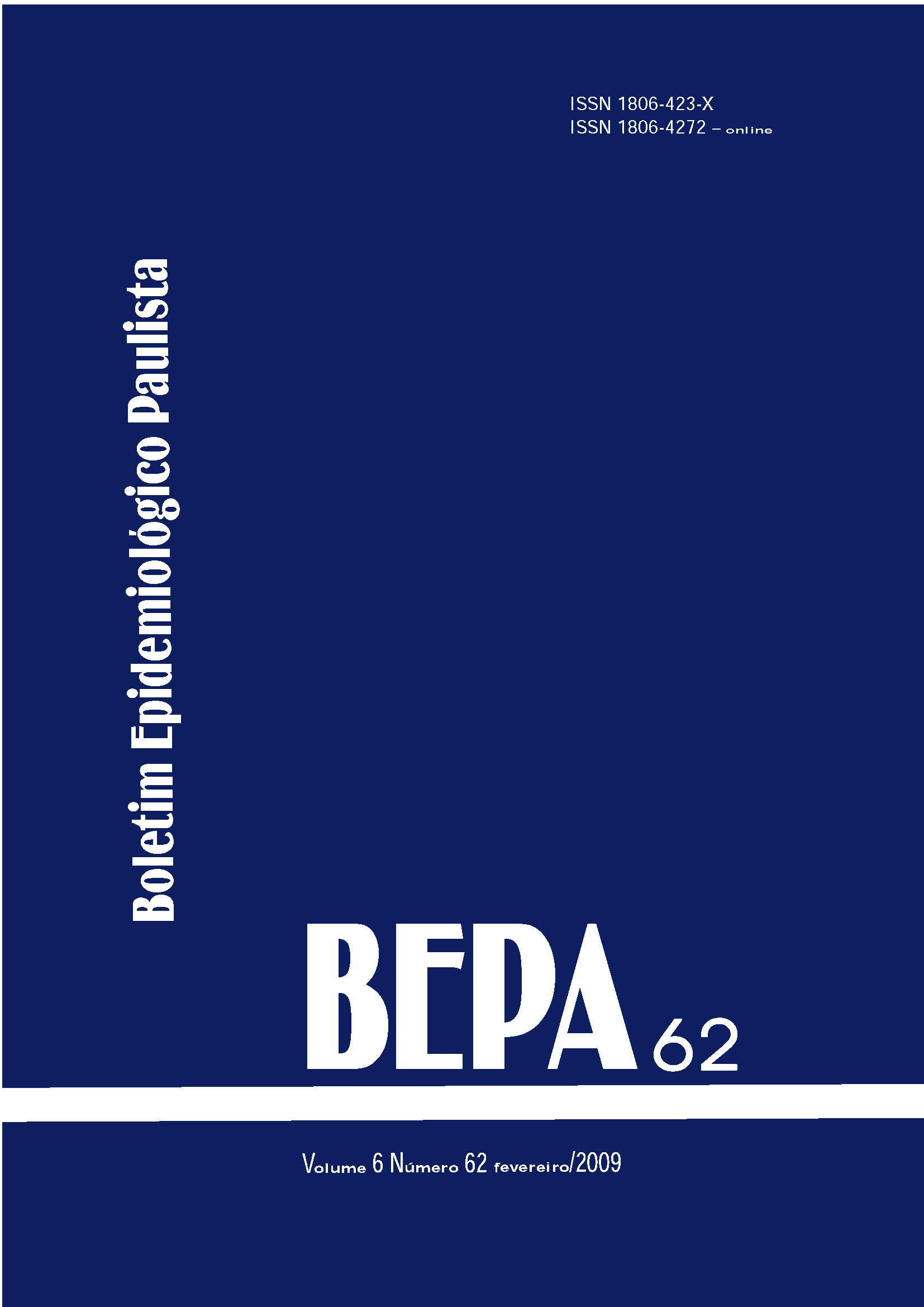Abstract
Systematic notification of trauma patients who were victims of transportation accidents in the region of Ribeirão Preto, in the State of São Paulo, is performed, since 1996, by the Epidemiological Surveillance Nucleus of the University Hospital (Hospital das Clínicas) of the Medicine College of Ribeirão Preto, of the University of São Paulo. In 2004, all external death causes started to be notified, and trauma severity levels were introduced, rated as RTS, ISS AND TRISS, along with other hospital guidelines. This study allows complete characterization of patients and traumas that occurred in the years of 2006 and 2007, employing demographic data from patients admitted and local in which the cases occurred; occurrence frequency of the different trauma mechanisms; definition of trauma severity employing the TS, ISS AND TRISS rates; need for surgery and which were the most frequent medical specialties employed; lethality rates, place, death cause and kind of pre-hospital admission transportation in which patients were taken to the hospital.
References
Trunkey DD. Trauma care systems. Emerg Med Clin North Am. 1984;2:913-22.
Política Nacional de Atenção às Urgências. 3 ed. ampliada. Brasília: Ministério da Saúde; 2006.
Pereira JRGA, Scarpelini S, Basile-Filho A, Andrade JI. Índices de trauma. Medicina. 1999;32:237-50.
Coimbra RSM, Angle N, Silva SE, Hoyt DB, Rasslan S. Índices de trauma: o que são e por que devem ser usados. Rev Col Bras Cir. 1997;24:255-63.
Champion HR, Sacco WJ, Copes WS, Gann DS, Gennarelli TA, Flanagan ME. A revision of the trauma score. J Trauma. 1989;29:623-9.
Association for the Advancement of Automotive Medicine. The abbreviated Injury Scale. 1990 Revision. Des Plaines, Illinois. 1990.
Baker SP, O’Neil B, Haddon W, Long WB. The injury severity score: a method for describing patients with multiple injuries and evaluating emergency care. J Trauma. 1974;14:187-96.
Champion HR, Sacco WJ, Copes WS. Injury severity scoring again. J Trauma. 1995;18:94-5.
Champion HR, Sacco WJ, Copes WS. Trauma Scoring. In: Feliciano DV, Moore EE, Mattox KL, editors. Trauma. 3 ed. Stamford: Appleton & Lange; 1996. p. 53-67.
American College of Surgeons. Committee on Trauma. Resources for optimal care of the injured patient: 1-135, 1999.
Van Natta TL, Morris JR JA. Injury scoring and trauma outcomes. In: Feliciano DV, Moore EE, Mattox KL, editors. Trauma. 4 ed. Stamford, CT: Appleton & Lange; 1999. p. 69-78.
NAEMT - National Association of Emergency Medical Technicians in Cooperations with the Comittee on Trauma of the American College of Surgeons. PHTLS basic and advanced prehospital trauma life support. Elsevier. 6 ed. Ohio; 2005.
manual. 6 ed. Chicago; 1997.
Champion HR, Frey CF, Sacco WJ. Determination of national normative outcomes for trauma. J Trauma. 1984;24:651-7.

This work is licensed under a Creative Commons Attribution 4.0 International License.
Copyright (c) 2009 Gerson Alves Pereira Júnior, Sandro Scarpelini, Ana Maria Figueira de Aquino, Roseli Claudino Santiago, Bento Vidal de Moura Negrini, Afonso Diniz Costa Passos
